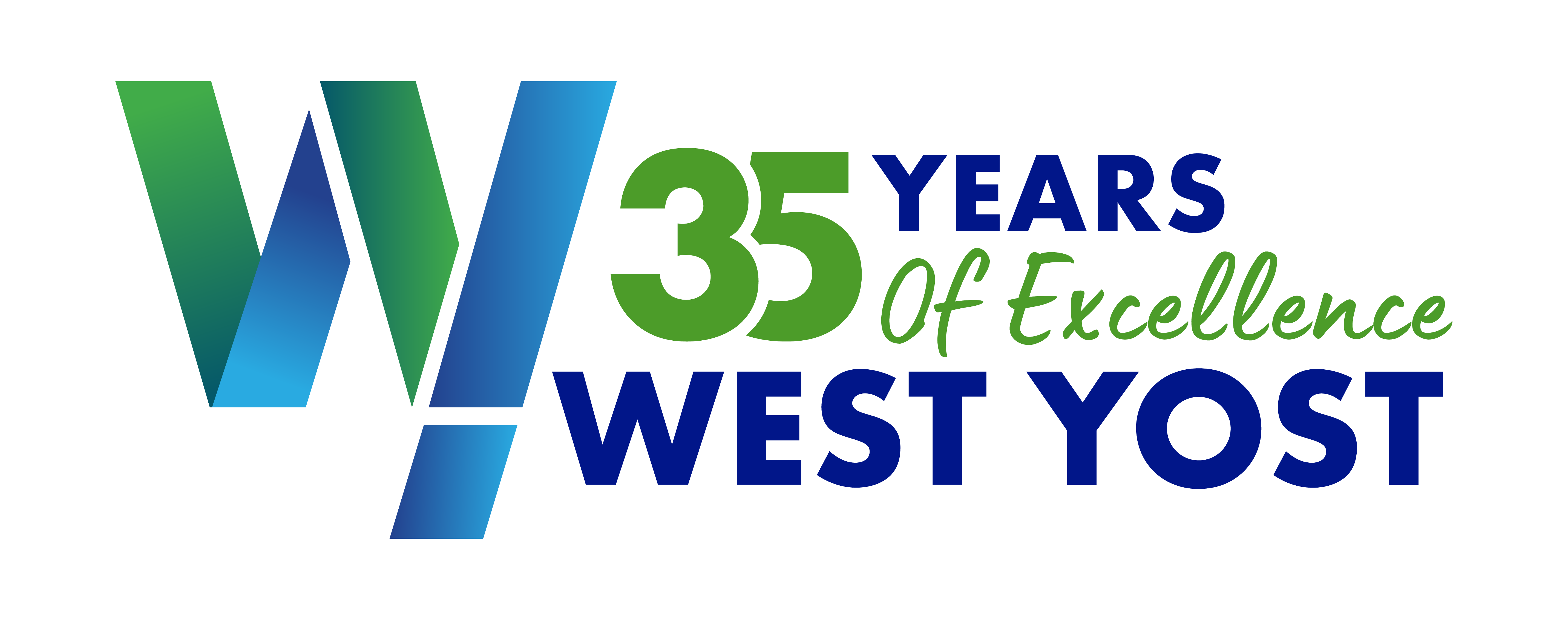Carrying the Torch | West Yost’s Kathryn Gies Shares Insights as CWEA President

By: Chuck Greely, Director of Operations- Planning and Kathryn Gies, Wastewater Treatment Specialist
This article contains and answers the following:
Insights from CWEA’s incoming president Kathryn Gies
Diversity and inclusion in water utilities
Impact of CWEA involvement on engineering careers
- What does the CWEA President do?
- How does involvement in CWEA benefit water professionals?
At West Yost, we’re proud to be home to not just one, but two CWEA Presidents, past and present. In this conversation, Kathryn Gies, West Yost’s Treatment Engineering Manager and newly elected President of the California Water Environment Association (CWEA), sits down with Chuck Greely, our Director of Operations: Planning and a former CWEA President. Together, they reflect on leadership, innovation, mentorship, and the future of the water industry. Their discussion highlights the passion, expertise, and dedication that make West Yost a leader in water solutions and shows how professional engagement shapes both our people and the communities we serve.
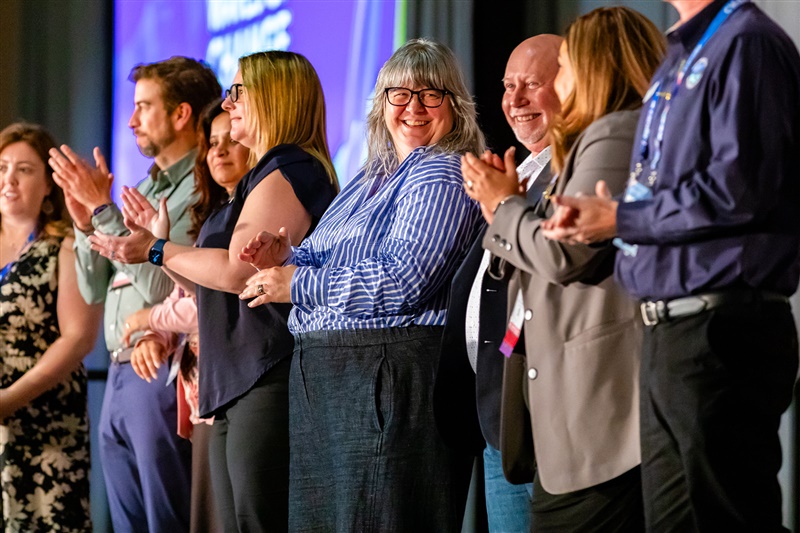
Two CWEA Presidents, One Firm
Chuck Greely (Director of Operations: Planning): Welcome, Kathryn! First, congratulations on becoming CWEA’s President. As someone who recently passed the baton, I’d love to hear — what does this role represent to you at this point in your career?
Kathryn Gies (Treatment Engineering Manager, CWEA President): Thanks, Chuck. Yeah, that’s an interesting question. I think it’s just an exciting time in my career. Kind of like you — it feels like we’re at the pinnacle of our careers right now. Especially when you work at a firm like West Yost, you are given so many opportunities to expand your knowledge base and explore opportunities for innovation and creativity. It is allows you to become an expert in your discipline. By the time you get to that 20, 25, 30-year mark, you’re at your peak. Everyone wants your time, everyone’s looking to you as a leader. Doing this role now feels like the right moment — I can really bring my best to what the organization needs. I still have another 15 years or so in my career, so there’s a lot to look forward to. Earlier, I probably wouldn’t have had the maturity or experience; later, maybe I’d be more checked out, thinking about retirement. I think this is the ideal time, no matter the career path.
“Being President right now gives me a chance to bring my strategic thinking skills to the table — to ask, ‘How can we apply what we’ve learned in the best way to get us where we want to be?’”
Chuck: I approached it the same way. At this stage, we’ve all had a lot of successes — and a few failures — and we’ve learned from both. We’re mature enough to apply that experience to future opportunities, including a presidency. That’s fantastic.
You’ve been involved with CWEA for over two decades. How has your time with the organization influenced your professional path and the way you approach your consulting work?
Kathryn: I think a lot of it is about appreciating the CWEA community and the bigger community we’re part of. As engineers, we can sometimes isolate ourselves, surround ourselves with just high-tech solutions or like-minded people. CWEA brings in the broader group — operators, lab folks, everyone. Sure, I interact with them at work, but you don’t always get the same kind of relationship you build when you’re working together on something within CWEA. You get to see different perspectives and break things down in a more personal way. Plus, there’s just this passion people bring for the industry, for clean water, and for volunteering. That passion isn’t something you always talk about day-to-day at work, but it really shines through at CWEA.
Chuck: I love that. Passion is the right word. I’ve done a lot across civil engineering, but the water and wastewater community is the most passionate I’ve seen. It’s a real pleasure to work with someone who’s deeply involved in CWEA because you know they’re bringing that commitment to the greater good of the project and the community.
Kathryn: For sure.
Chuck: Your expertise spans treatment, process design, permitting, recycled water planning, and more. How do you see that breadth of experience adding value for the cities and districts you work with?
Kathryn: I think it’s somewhat unique in our industry right now. People are really pushed to become experts in one thing, right? Like, you’re the best process designer, and that’s what you do all day, every day. But I’ve had the chance to explore all the things I’m interested in, and I bring that to the table. It’s one of the things I love about working at West Yost, that I’m provided an opportunity to step into a variety of areas and take on new challenges that interest me. This perspective does not just give me knowledge about different disciplines — it allows me to use that knowledge to provide a greater perspective. If we do this over here, how does it impact that over there? If a new permit limit comes into play, can the treatment plant realistically meet it? What does that mean for staffing or process changes? Whether I’m working with a client or talking at a CWEA event, I love being able to help people connect those dots.
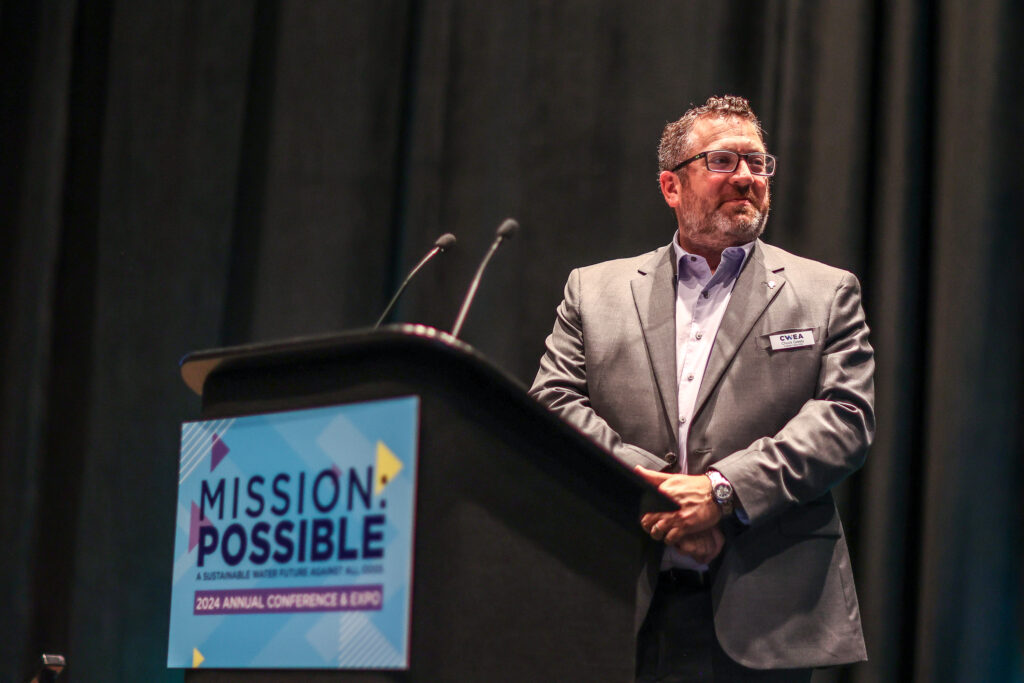
Chuck Greely speaking at the CWEA’s 2024 annual conference. Photo credit: CWEA
Chuck: I love how you tie that back to CWEA. The association has such a wide membership — collection systems, treatment operators, lab technicians, mechanics, engineers, all sorts of backgrounds. Do you think your varied experience helps unite or connect the CWEA community?
Kathryn: That’s one of the things I’m most excited about in this role — bringing together different groups within CWEA and helping them see things in new ways.
Chuck: You led the dry vac pilot project in Davis, a great example of forward-thinking technology. How do pilot projects like that help shape practical, cost-saving solutions for communities?
Kathryn: That pilot study was for an emerging technology being developed here in Northern California. It has a lot of potential to streamline and reduce solids processing costs. But as you know, it takes a while for any technology to get to market in our industry. One of the most interesting parts was working with a vendor who maybe didn’t fully appreciate all the steps — the need to demonstrate performance, put the information out there, and build support in the industry. So, beyond collecting the data and completing a study for the City of Davis, it was even more rewarding to use that information we gathered to support the developer’s outreach and to help other communities facing similar issues.
Chuck: Since I know you won’t be busy enough at AC26 next April, can we look forward to an abstract on the dry vac pilot?
Kathryn (laughing): I should! Maybe I’ll figure out a way to get one of my colleagues to submit it.
Chuck: You’ve developed master plans across Northern California. How do you draw on your technical and strategic expertise to help communities do more with less while planning for the future?
Kathryn: That’s the hardest part of master planning, and I take it really seriously. It’s not just about, “Oh, you can do this and spend all this money.” It’s about asking, “Do you really need to?” Are there still questions to answer before you leap to the most expensive solution? You have to think through the steps that will likely happen along the way that can lead to a more efficient or better project. Optimization is also critical — Master Plans must ask “are you getting the most out of what you already have?” Before you conclude it’s time to add more capacity, make sure what you have is working the way it should.
“Leadership isn’t just about holding a title — it’s about mentoring the next generation, questioning the status quo, and working together to create lasting impact.”
Chuck: What advice would you give to someone trying to explain all this to elected officials or the public — people who just want “more for less” but might not understand all the technical details?
Kathryn: That’s a tough one. It’s one of the hardest parts of our jobs — taking very technical, complex information and distilling it into something the public can appreciate, especially when you’re talking about expensive investments. The key is more communication, not less. You have to explain the “why” — why the regulations are there, how they impact the community, and what needs to be accomplished. And you have to build trust, show that you’ve spent time at their facilities, that you know their staff, and that you understand their data, their permits, and their needs. Once people understand the “why,” the “how” becomes a little easier to accept.
Chuck: As the CWEA President, what initiatives are you most excited to champion?
Kathryn: I’m really excited about the workforce development and community-building initiatives. They’re related but a little separate. On the workforce side, it’s about partnering with educators, engaging students who are still in school or considering a career in water, and connecting them to the CWEA community. That’s critical for growing our workforce. On the community side, it ties into the diversity and inclusion work we’ve been doing, where we identified some of the barriers that we’re making people feel left out. Issues like geography, workforce type, and access were the biggest factors that need to be considered. We’ve made great progress so far, but I’m excited to see how much further we can take it to make sure everyone feels like they have a voice in CWEA and are part of something valuable.
Chuck: This strategic plan feels like the first real step away from “we’ve always done it this way” thinking.
Kathryn: Yes! For me, I love that this year is kind of the “research year” for the new strategic plan, where we’re figuring out the best way to tackle the big initiatives we’ve set out for ourselves. Being President right now gives me a chance to bring my strategic thinking skills to the table— to ask, “How can we apply what we’ve learned in the best way to get us where we want to be?”
Chuck: You’ve been deeply involved in CWEA’s education efforts. How do you bring that passion for learning and mentorship into your client and team work?
Kathryn: I’ve always had a strong interest in education and mentorship. When I was younger, I thought maybe I’d be a teacher or an engineer — and now I realize I can do both at the same time. Some of the best parts of my workday are when I’m helping my team problem-solve or figure out how to do something better. The skills I’ve learned through CWEA have also shifted how I present to, and communicate with, clients — it’s not just about showing expertise and jumping to the answers. Effective communication involves helping people understand the why and to feel engaged in the decision-making process.
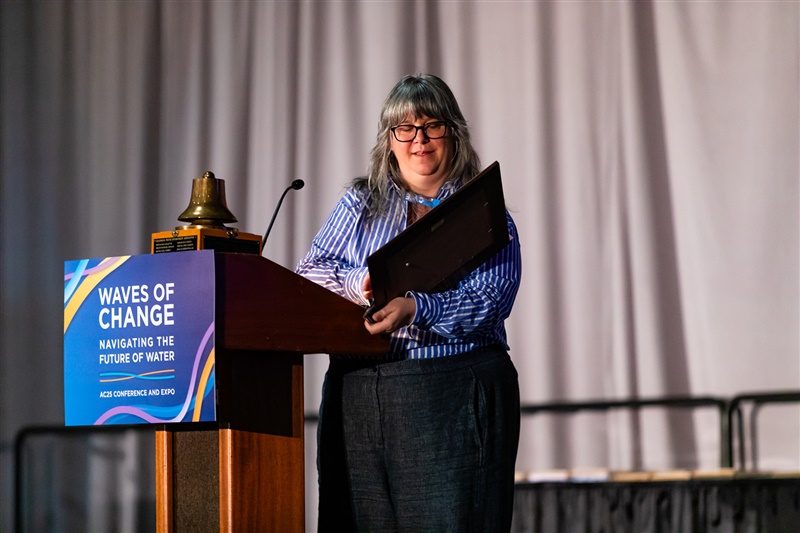
Chuck: You’ve led a lot of complex, high-stakes projects. Is there one that stands out as a defining moment?
Kathryn: The City of Davis design-build project still stands out. I’ve worked with Davis my entire career, and we helped them transition from natural treatment systems that couldn’t meet new regulations to a new facility. We went from an expected $200 million budget to just over $100 million by working closely with UC Davis experts and then the design-build team. Now, we’re doing something similar in Medford, Oregon — a big advanced nutrient removal project. We’re just at 30% design, but it’s exciting to push ourselves and to work hand-in-hand with the contractor to deliver on budget. Maybe in 18 months, I’ll say Medford has become my defining project!
Chuck: We’ll check back in then — and we’ll do the debrief on your presidential year too!
Kathryn (laughing): Perfect!
Chuck: Final question: as CWEA President, how do you hope your leadership will shape the profession and make a lasting impact?
Kathryn: I think I’m always going to push to make things better — to ask, “Is this really the best way, or are we just doing it this way because we always have?” I want to challenge assumptions and push for improvements, whether it’s restructuring the board or looking at how technology and AI are changing the industry. I can’t say yet what my lasting impact will be, but I’ll push myself and others to keep looking forward. Ask me in a year!
Chuck: CWEA has meant so much to me over the years — and if I can give back even 1% of what I’ve gotten from it, that’s a huge impact. If we can light the passion in just one or two future leaders, we’ve done our job.
Kathryn: That’s true.
Chuck: Thank you so much, Kathryn. This was a lot of fun.
Kathryn: Thanks, Chuck!
As Kathryn steps into her term as CWEA President, she brings not only decades of technical and strategic expertise but also a deep commitment to pushing the industry forward. Her conversation with Chuck reminds us that leadership isn’t just about holding a title — it’s about mentoring the next generation, questioning the status quo, and working together to create lasting impact.
We’re proud to celebrate Kathryn’s achievements and excited to see how she’ll help shape the future of water in California and beyond.
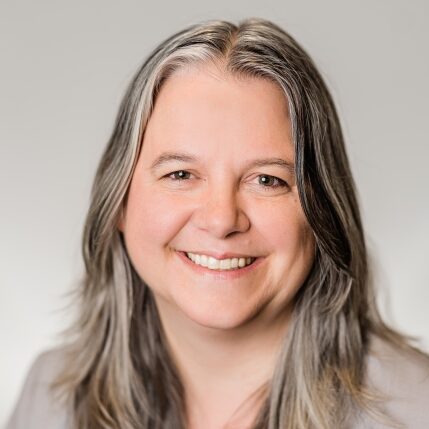
Kathryn Gies is an engineer with experience managing complex wastewater treatment and recycled water planning and permitting projects. Kathryn’s areas of expertise include wastewater treatment facilities planning; treatment process design; biological nutrient removal (BNR) systems; natural wastewater treatment systems; sustainable infrastructure planning; NPDES regulatory permitting; recycled water and land disposal systems master planning; biosolids land application planning and permitting; and groundwater quality studies for regulatory compliance purposes. She has completed facilities planning studies for many wastewater treatment plants, including BioWin process modeling of biological nutrient removal activated sludge treatment systems
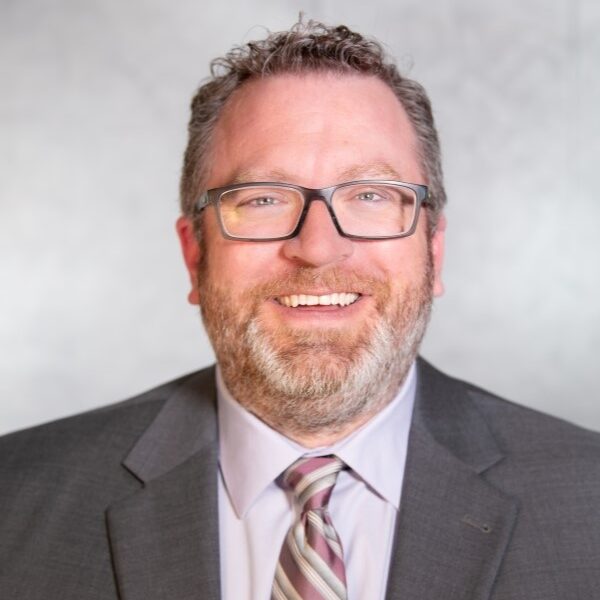
Chuck Greely has more than 25 years of experience working with a variety of public and private entities on infrastructure, water resources, habitat restoration, and recreational and site development projects throughout the Western US. He currently serves as the Director of Operations – Planning for West Yost, responsible for operations, strategy, risk management, business development, P&L, staff development, and comprehensive project management of all aspects of project planning, permitting, and design; as well as development of long-term infrastructure management and maintenance programs.
